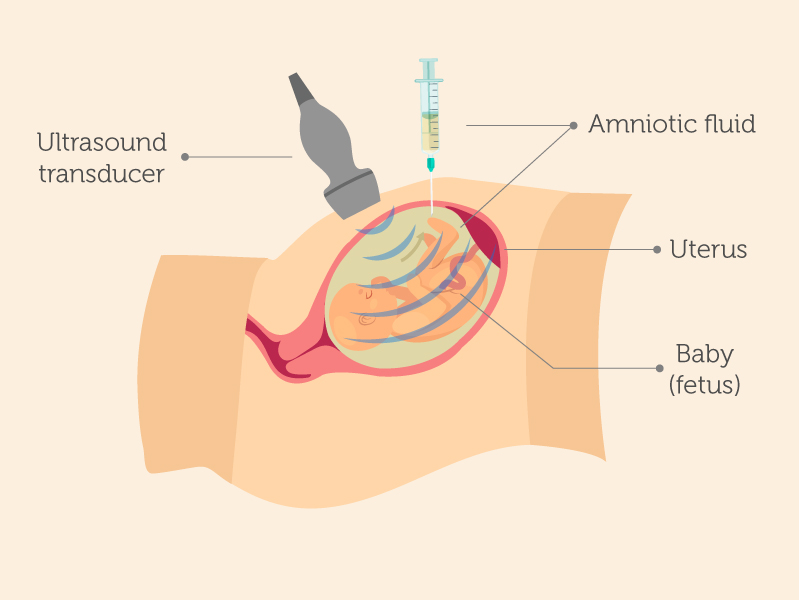Your baby grows within a bag of membranes called the amniotic sac. Within that sac, your baby is suspended in amniotic fluid which helps to protect it. It can act as a shock absorber to shield the baby from bumps to your abdomen and it allows the baby to move freely, which helps with muscular and skeletal development. Swallowed amniotic fluid helps the formation of the lungs and gastrointestinal tract. Importantly, cells from the baby are found floating freely within the amniotic fluid.
The human body is made up of millions of individual units called cells. Fluid containing some skin cells, shed by your developing baby, is collected in an amniocentesis. We can then examine these cells.
In the centre of each cell is a structure called the nucleus. The nucleus is where chromosomes are located, and chromosomes contain genes that instruct our bodies how to develop and function. By examining these chromosomes and genes we can identify whether your baby has a chromosomal disorder (such as Down’s Syndrome), or whether a baby has inherited a genetic condition that can run in families (such as Sickle Cell Disease)
Read more about

